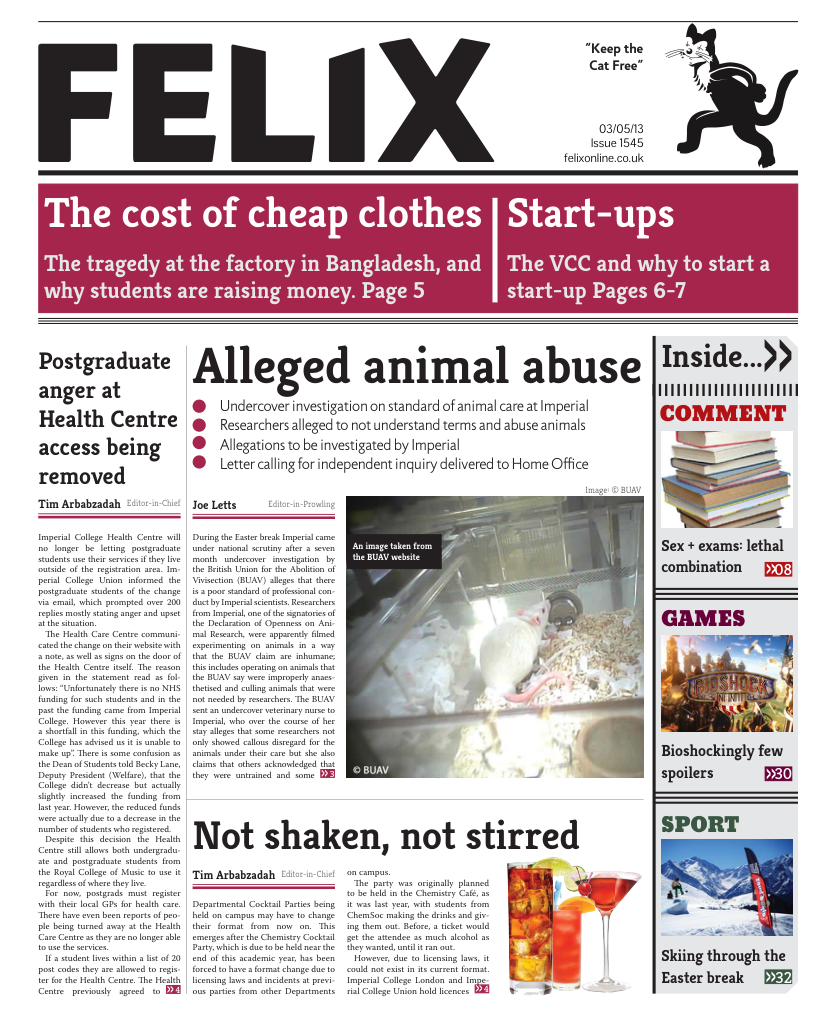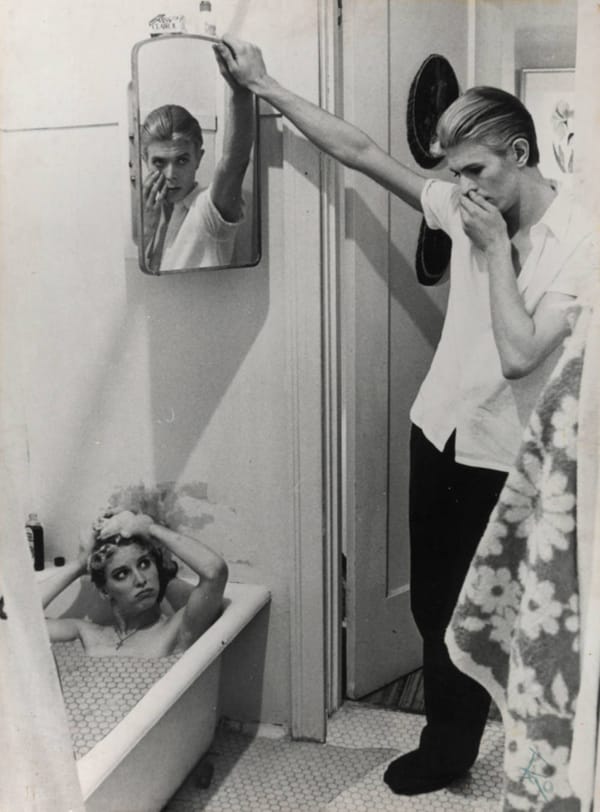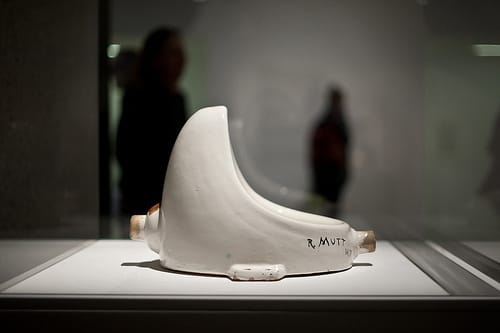Designer genes
Lily Le isn't talking about Versace...

We all fucking love science, but it has to be admitted that, frankly, it can get achingly dull. How many times have you heard the words, “after a month and a half of protocol optimisation, my experiment has failed again! Isn’t this so FUN?” That’s right, never.
Despite this, you don’t have to look too far to rediscover the alternative side of science. At Imperial an initiative, Artifact, has been set up by students to encourage the creation of artistic works inspired by science and technology. At a recent meeting, I met Raphael Kim, a MA Design Interactions graduate from the Royal College of Art. Ever since, I have been probing him with questions about his work. Just as science proposes questions about the world, Raphael has taken this notion and added the twist of including scientific questions through the medium of design. A BSc in biotechnology and a year spent scrutinising proteins in Switzerland are not circumstances unfamiliar to many Imperial students. How about taking scientific questions out of a research setting and answering them in a context unrestricted by commercial profiteering or the pressure of saving lives?

Partly inspired by the Citizen Science concept resulting from his previous lab project and some DIY aspects of synthetic biology, Raphael explores the less obvious links between science and design. Take a glass of water, extract microscopic organisms called rotifers, and design. The Gene Hunting Device exploits the phenomenon of horizontal gene transfer, which allows rotifers to incorporate pieces of DNA from their environment into their genome. Introducing a gene encoding a fluorescent protein and when it encounters a gene being hunted for (sort of like a switch), the rotifer glows (much like a LED bulb) to indicate that the target DNA is in the environment.
As Raphael’s work is based on scientific phenomena, I wondered whether the design aspect set him free from the scientific laws which make research so frustratingly exact.
“I guess starting a project with a scientific hypothesis is something ingrained in me.” He says, “but you also need to think about visual and aesthetic aspects to communicate scientific elements. Microbes are not usually visible to the naked eye - but if you are undertaking a design project, it may force you to focus on the visual language of how microbes could be depicted. How do you show something that is normally invisible to us in a way that is thought-provoking?”
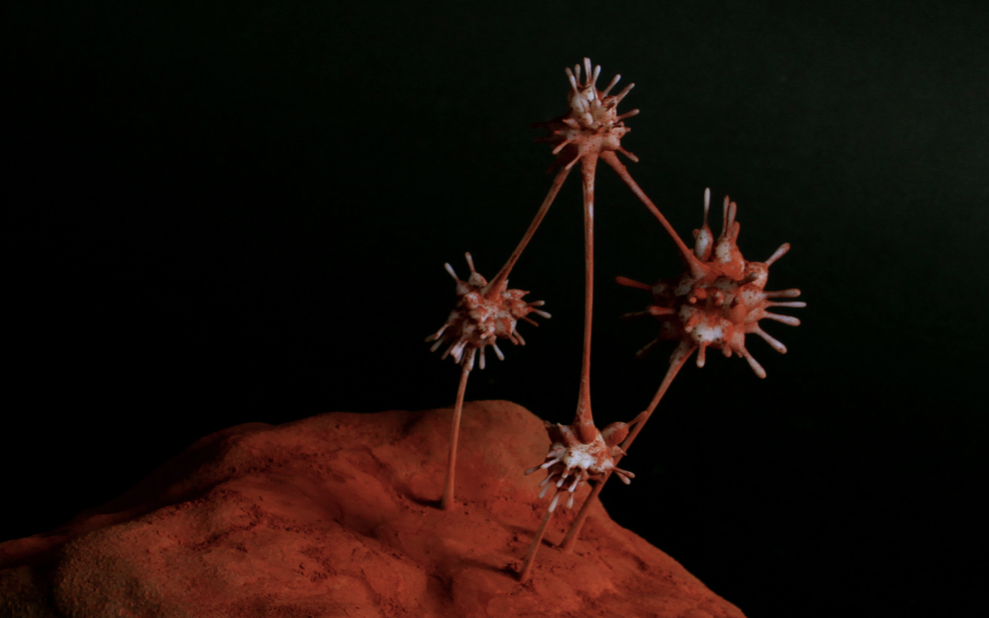
If the biosensing principles of the Gene Hunting Device are slightly too scientific for your design liking try Space Bacteria based on a scientifically unlimited ‘what if’ concept.
We already exploit micro-organisms naturally found in extreme conditions, but earthly extremes are no match for those found in space. Generated through collaboration with Jae Yeop Kim, the next idea involves genetically modified bacteria taken from human bodies using synthetic biology techniques before farming them on Mars. The result is to see how they would evolve and survive, and how useful they could be back here on Earth.
“You have to forget about the limitations when you start a project, and keep an open mind” says Raphael.
“Science dictates that it is unlikely for bacteria to grow in large colonies on Mars. We explored this with an assumption that we may find a way around the problem of harsh Martian conditions. Once we were unchained from these restrictions, it was really about designing for a possible future and allowing the audience to finish our story. For what purpose do we want to send bacteria to Mars, and what are the potential social and cultural implications of creating agriculture beyond our planet?” As we hear about scientific and arts funding cuts, I wondered how difficult it was for a designer to carry out such projects. It turns out the creativity moulding his work extends further than just shaping it’s substance and style.
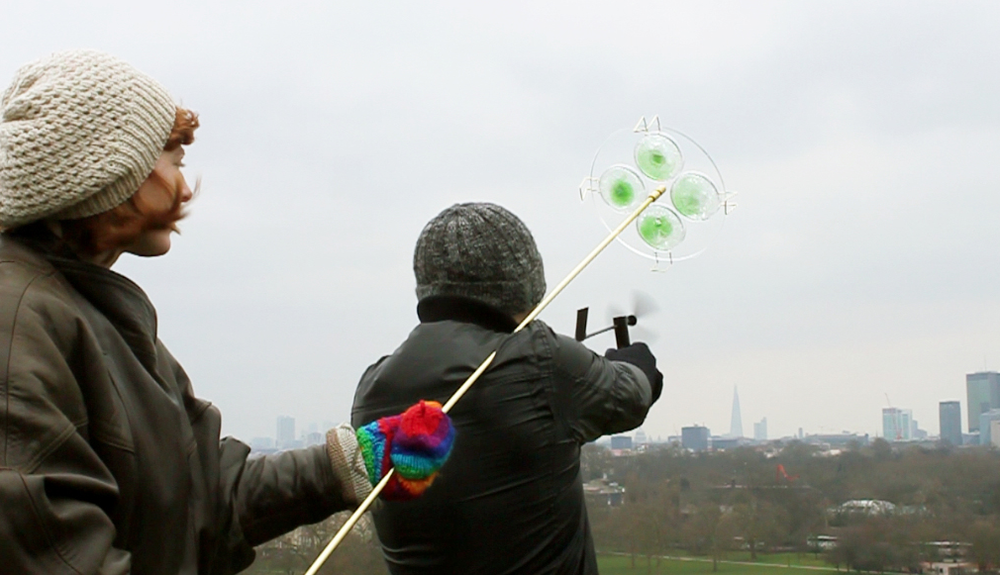
“Petri dishes were bought from a school supplier, a cheap oven (incubator) from Argos, and agar powder from a Chinese restaurant in Soho. Once transferred to liquid medium, bacteria were collected using a DIY centrifuge. I had made several variations of these – some from salad spinners, egg whisks and a small electric drill,” he explains of his project Tangible, which uses the bacteria to form the shapes of objects resembling those found in daily life.
By giving the usually invisible bacteria an unavoidable physical presence, the viewer is made to think about how we interact with them and how different this is when we remember that bacteria are living organisms capable of modifying designs we interact with everyday.
I was glad to hear that working with science from a different perspective didn’t completely exclude Raphael from the world of research.
“I think it is fair to say that the scientific community consists of a variety of characters who are and are not open to integrating with artists and designers. You can always drop a polite email to a researcher you are interested in. You may not get an immediate response, but it is mostly a matter of perseverance.”
To see more of Raphael’s works and latest news, [visit www.biohackanddesign.com ](http://visit www.biohackanddesign.com )

